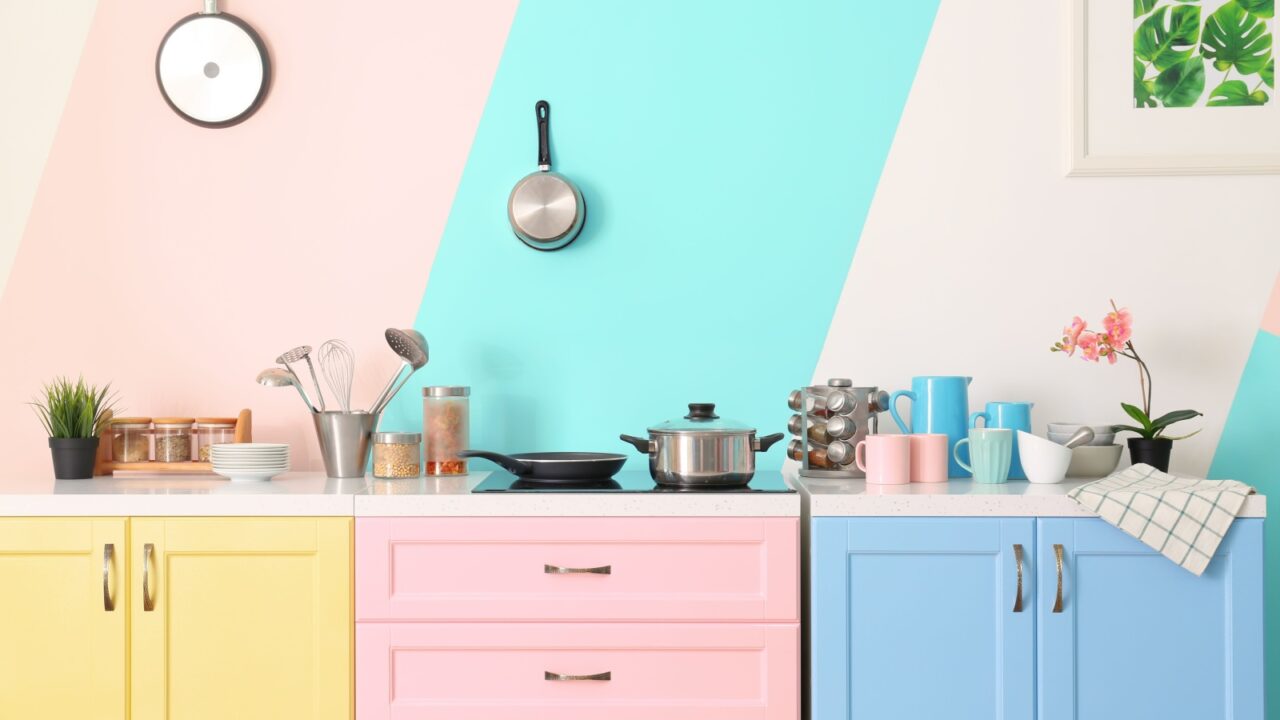
Nostalgic Colors Reimagined
Bringing back retro kitchen colors adds charm, personality, and a touch of history to your home. These timeless shades, from warm mustard yellow to pastel pink. Once defined past decades and are now making a stylish comeback.
Whether you love the elegance of sage green or the vibrancy of retro orange, each color tells a story. Paired with the right accents, these hues create a space that feels both nostalgic and refreshingly modern.
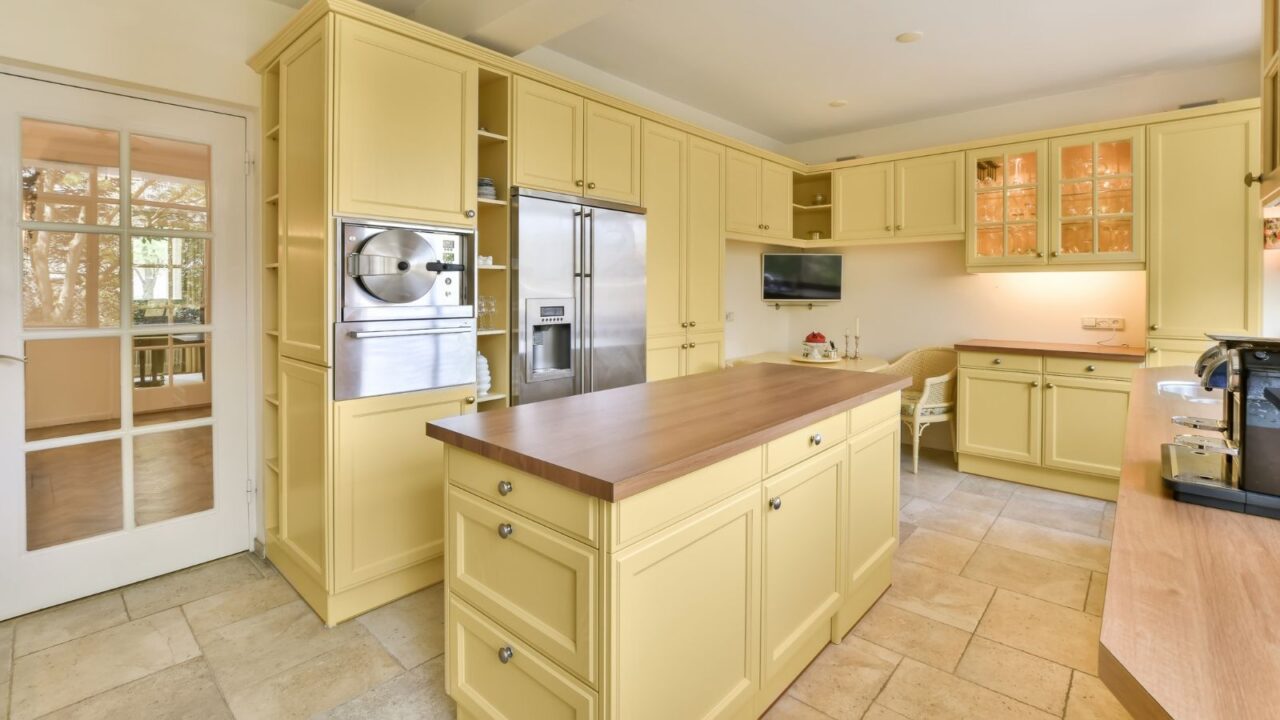
Butter Yellow
Butter yellow cabinets were a staple in 1950s kitchens, bringing warmth and brightness to any space. This creamy, soft shade pairs beautifully with wood accents, white countertops, and retro appliances.
Incorporating butter yellow cabinets creates a cozy, welcoming atmosphere that feels like a comforting childhood memory. Their ability to reflect natural light makes the kitchen feel larger and more inviting, perfect for those who love a cheerful and uplifting space.
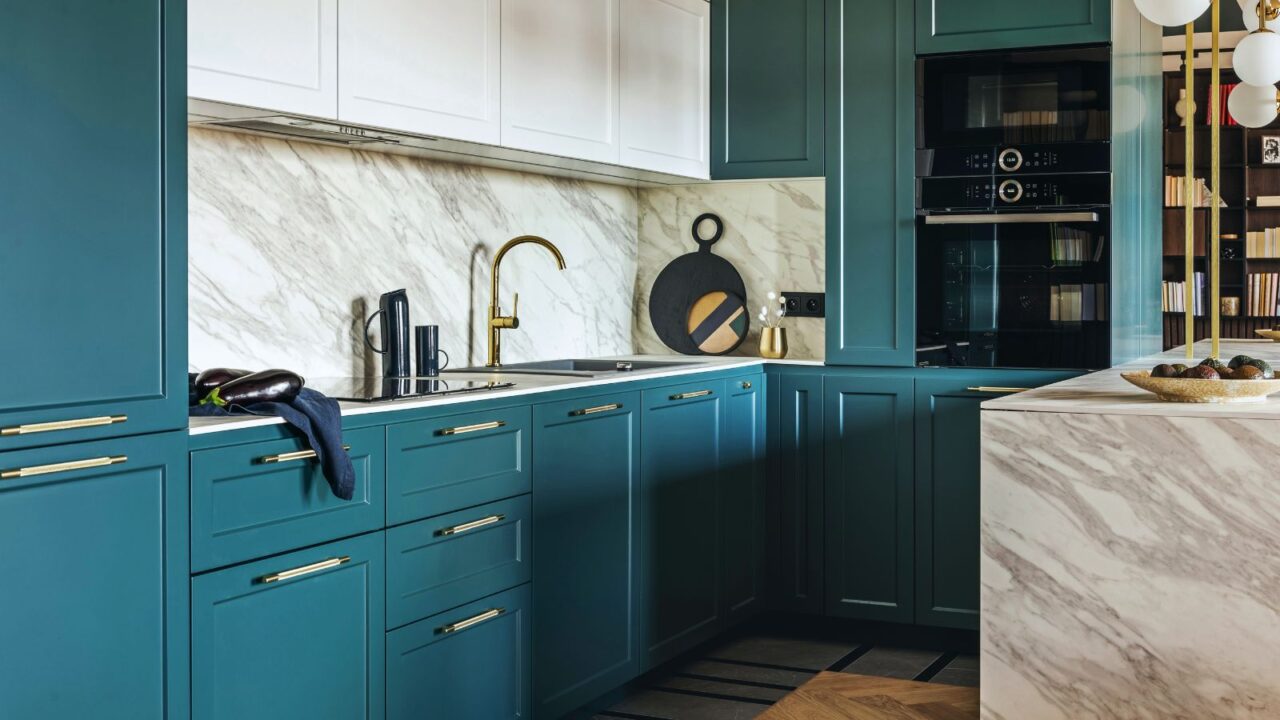
Teal
Teal was a kitchen favorite in the 1950s and 1960s, offering a bold yet sophisticated touch. This rich blue-green hue brings depth and personality, making cabinets, walls, or backsplashes stand out.
Teal pairs beautifully with crisp white, warm wood, or brass accents, creating a balanced blend of retro charm and modern appeal. Its cool undertones keep the space feeling fresh, while its vintage roots add a nostalgic, timeless vibe.
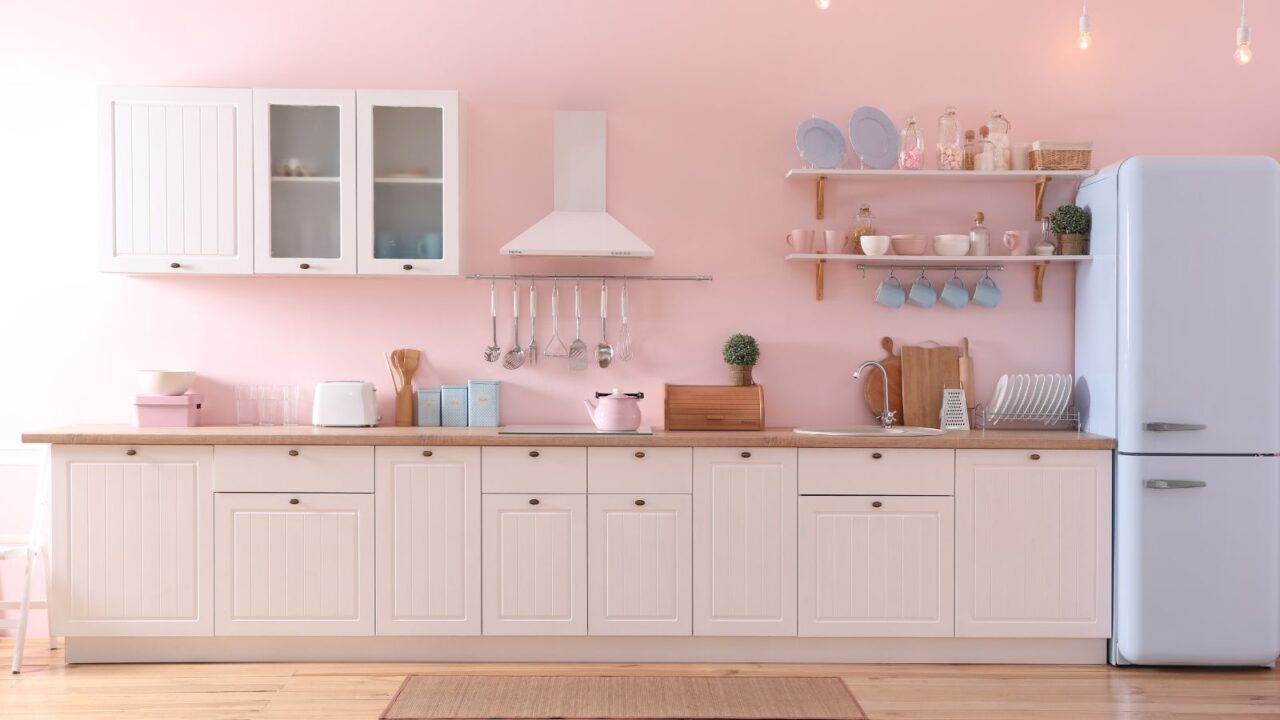
Pastel Pink
Pastel pink kitchens were trendy in the 1950s, often paired with white and warm wood tones. This sweet, soft hue adds a fun, nostalgic touch when used on cabinets, backsplashes, or accent walls.
Blending pastel pink with vintage-inspired decor keeps the look charming rather than overwhelming. The color’s delicate nature adds a touch of warmth and playfulness, making it perfect for homeowners who want a hint of whimsy without compromising elegance.
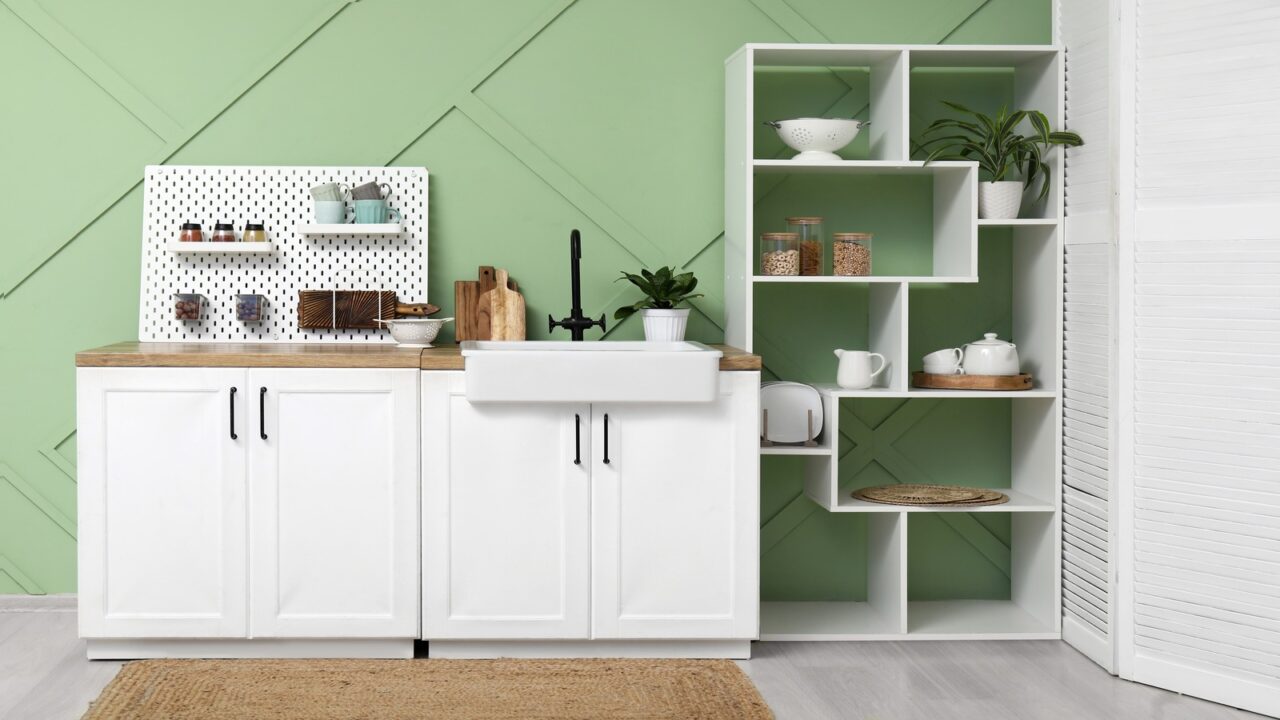
Mint Green
Mint green kitchens were everywhere in the 1950s, and they’re making a major comeback. This fresh, cheerful shade works perfectly with chrome accents, white cabinets, and checkered floors.
Painting your walls or cabinets mint green instantly transports your kitchen back to a fun, retro-inspired era. The color’s vibrant yet soothing quality makes it an excellent choice for a space where cooking, dining, and socializing take center stage.
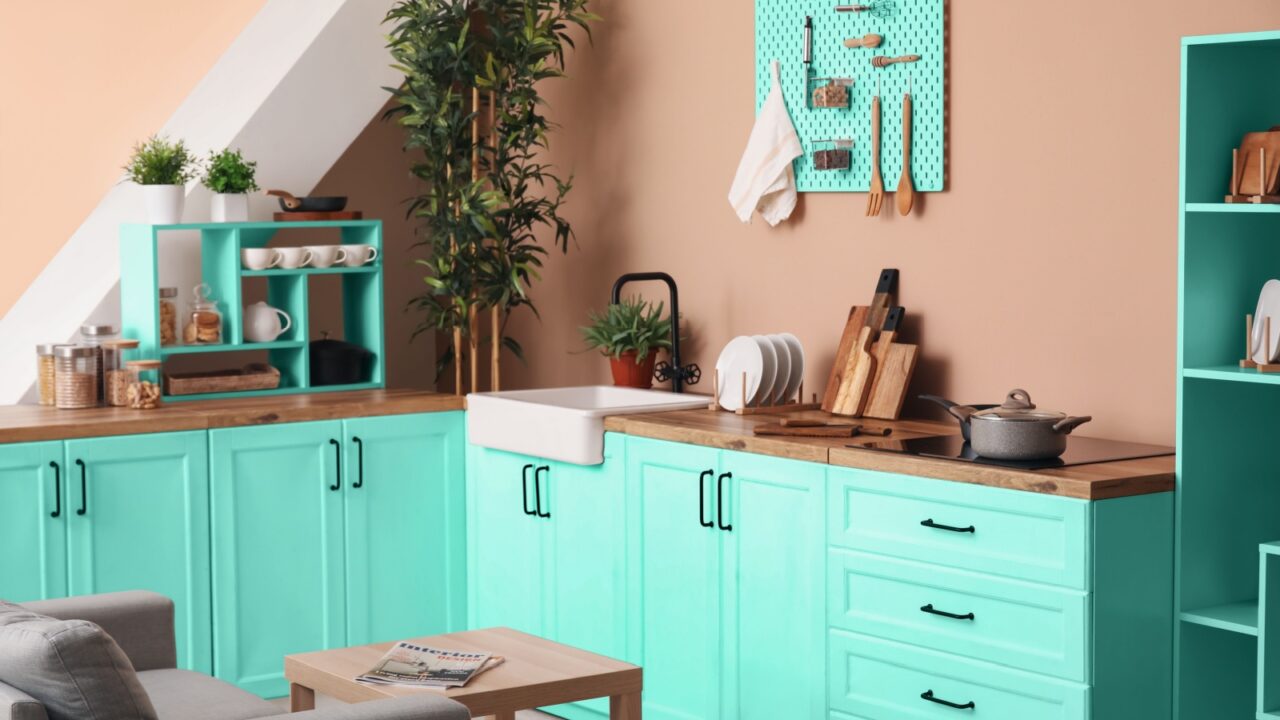
Turquoise
Turquoise was a showstopper in 1950s kitchens, adding a bright, cheerful energy to the space. This vibrant blue-green hue pairs beautifully with beige, softening its boldness while maintaining a retro feel.
Combining turquoise cabinets with beige walls or countertops creates a balanced, inviting look. The contrast keeps the kitchen feeling fresh and lively while adding warmth and timeless charm.
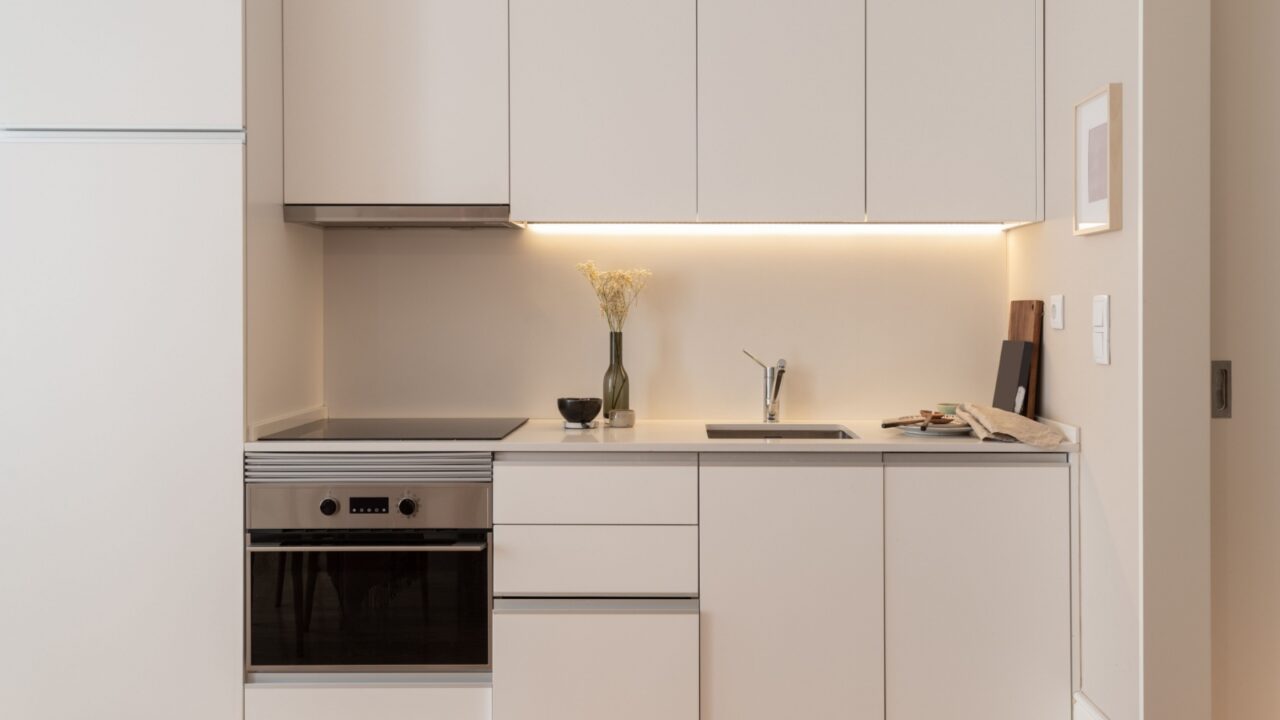
Warm Whites
Warm whites, like ivory and cream, never go out of style. Unlike stark whites, these shades create a softer, more inviting space that works with any decor. Whether on cabinets, walls, or trim, warm whites provide a perfect backdrop for vintage touches and antique-inspired accessories.
Their gentle warmth makes the kitchen feel cozier, making it an ideal setting for family gatherings, morning coffee, and everyday cooking.
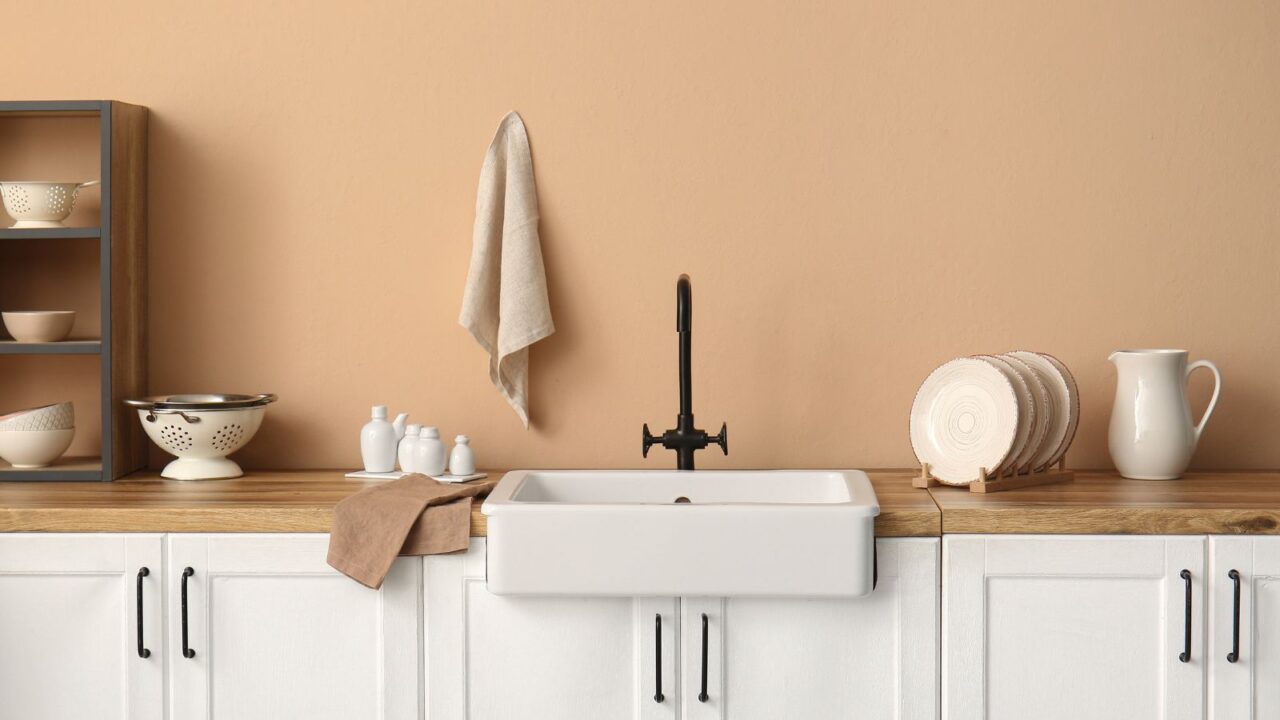
Beige
Beige kitchens were all the rage in the 1960s and 1970s, bringing understated sophistication. This timeless neutral adapts to various styles, from farmhouse to mid-century modern.
Beige walls or cabinets pair beautifully with warm wood tones and brass finishes, keeping your kitchen classic and cozy. Its versatility allows you to layer different textures and colors, ensuring a balanced and welcoming space without overpowering other design elements.
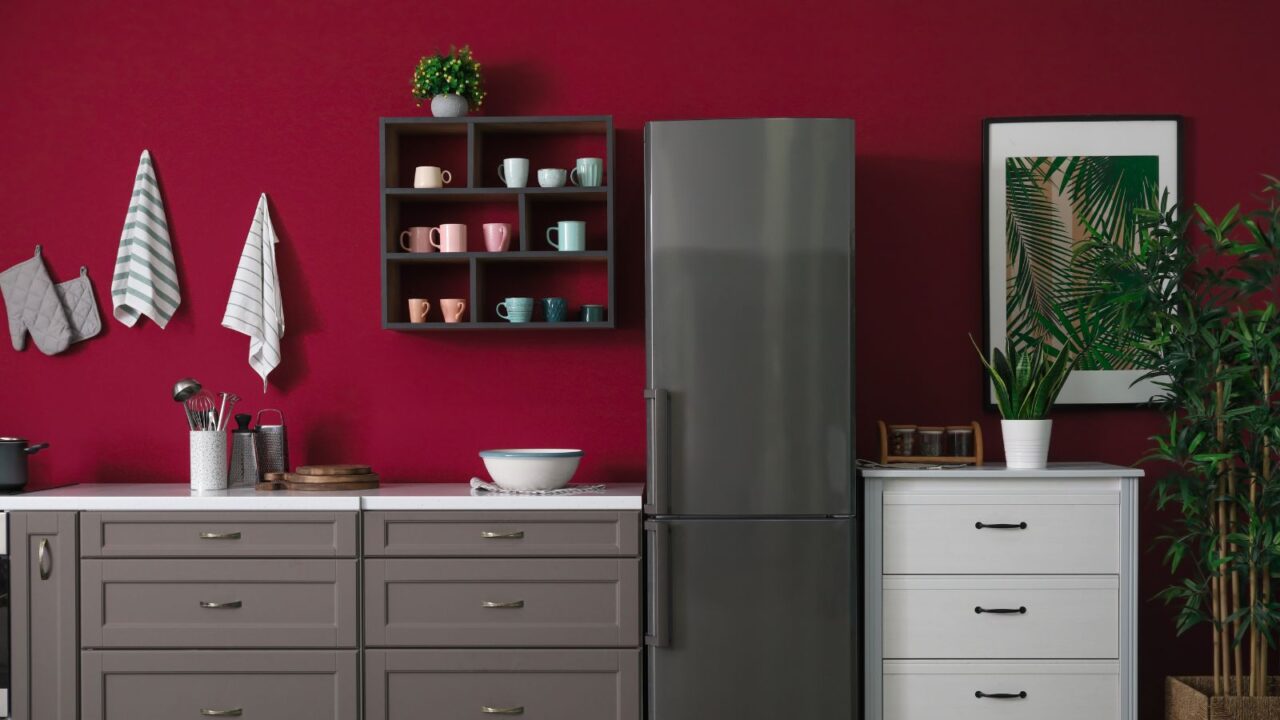
Burgundy
Burgundy kitchens were a rich and sophisticated choice in the 1970s and 1980s, adding warmth and depth to the space. This deep, wine-toned hue pairs beautifully with gray accents, creating a refined yet inviting atmosphere.
Whether used on cabinets, walls, or decor, burgundy brings a bold vintage charm without feeling overpowering. Its rich, cozy appeal makes the kitchen feel timeless, elegant, and full of character.
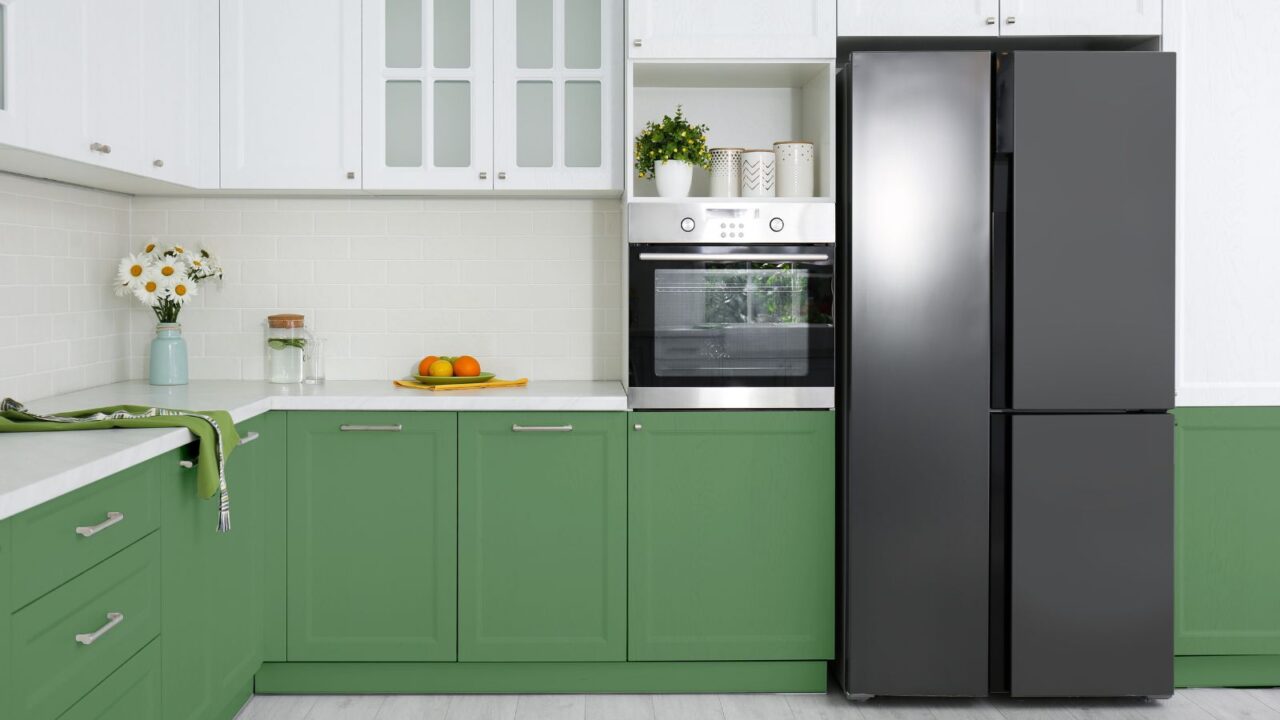
Sage Green
Sage green kitchens were a classic favorite in the mid-20th century, bringing a sense of calm and understated elegance. This soft, earthy shade pairs beautifully with neutral accents, creating a balanced and inviting space.
Sage green works well on cabinets, walls, or tiles, adding a subtle retro charm without feeling outdated. Its soothing nature makes the kitchen feel fresh, welcoming, and effortlessly timeless.
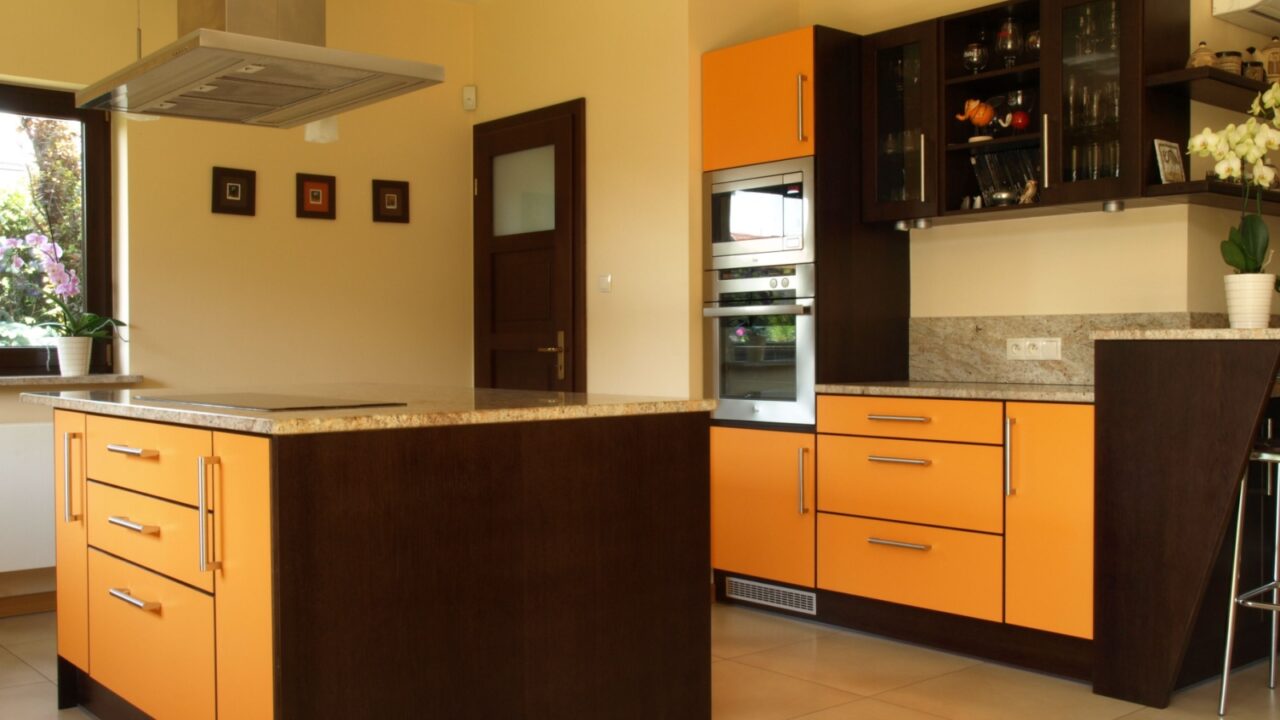
Orange
Orange kitchens were a standout trend in the 1960s and 1970s, bringing energy and personality to the heart of the home. This bold hue adds a playful, vintage charm while creating a warm and inviting space.
Whether used on cabinets, walls, or small details, this shade makes a bold statement without feeling overwhelming. Its lively, cheerful nature ensures your kitchen feels both stylish and full of character.
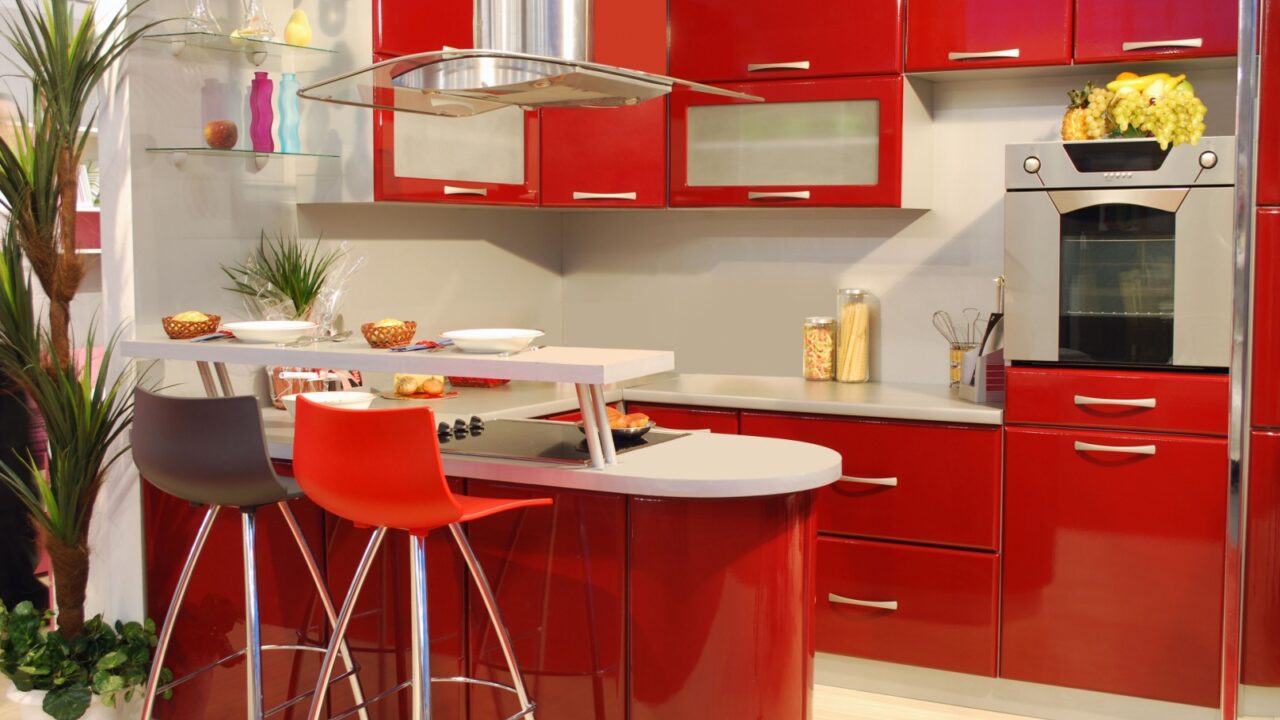
Red
Red kitchens were a bold statement in the 1940s and 1950s, bringing energy and warmth to the heart of the home. This vibrant hue works beautifully on cabinets, accent walls, or vintage appliances, creating a lively, nostalgic feel.
Pairing red with white or soft neutrals keeps it balanced while maintaining its retro charm. Its bold, inviting nature makes the kitchen a perfect space for gathering, cooking, and creating lasting memories.
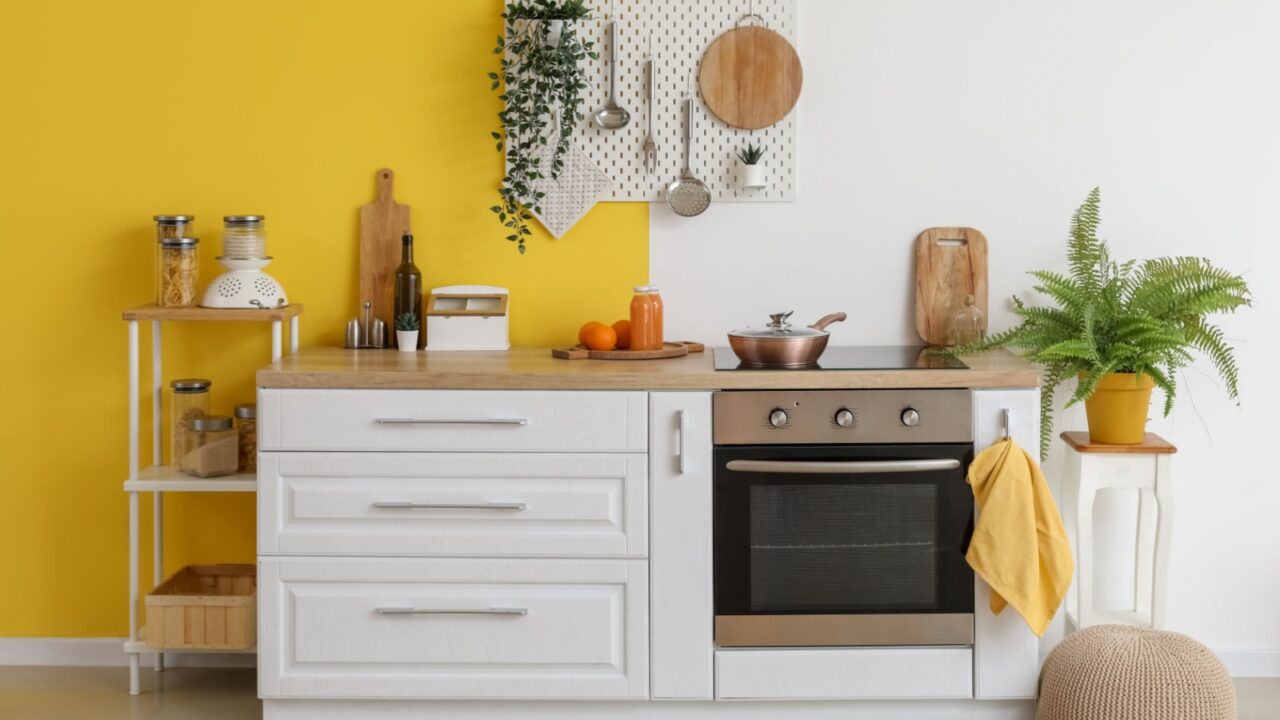
Mustard Yellow
Mustard yellow was a defining kitchen color in the 1970s, adding a rustic, homey feel. This deep golden hue pairs well with warm wood or neutral accents, creating a balanced and inviting atmosphere.
Mustard yellow creates warmth without feeling overwhelming, making it a great choice for kitchens with farmhouse or retro-inspired decor.
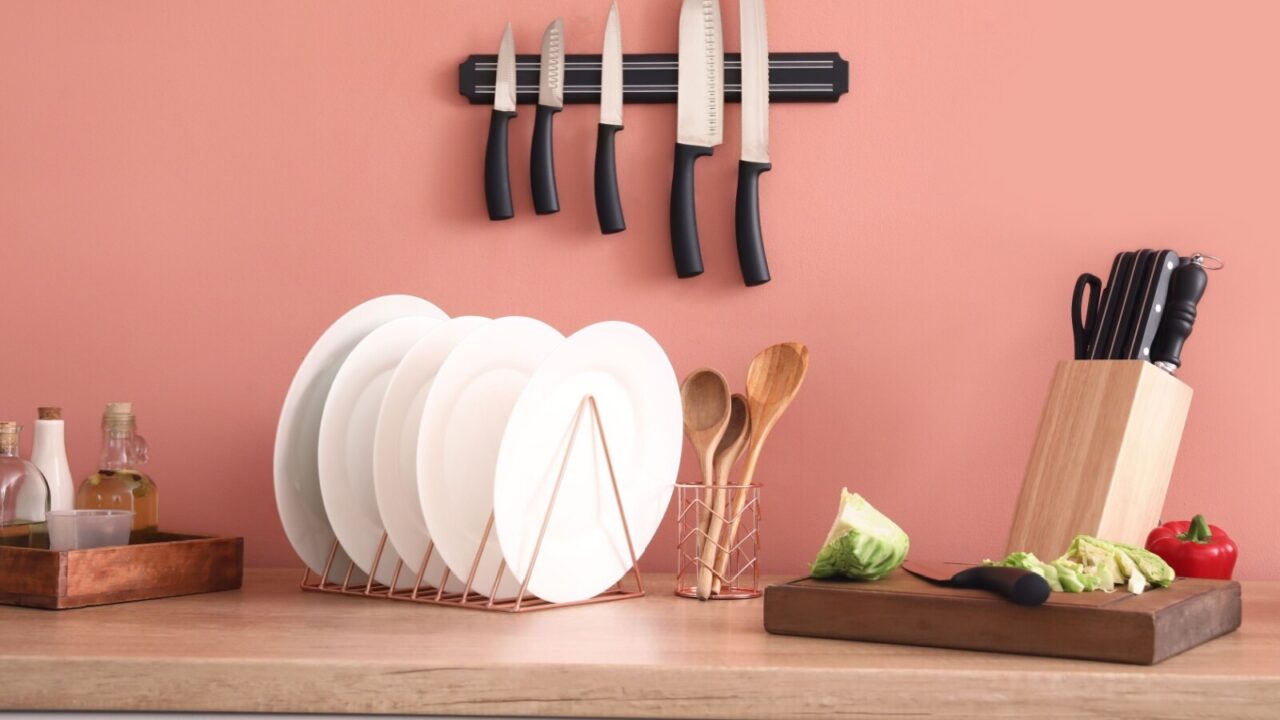
Peach
Peach kitchens were a popular choice in the mid-century era, offering a warm and inviting atmosphere. This soft, muted shade brings a gentle retro charm while keeping the space light and airy.
Whether on cabinets, walls, or decor, this color adds a cozy glow without feeling overpowering. Its subtle warmth makes the kitchen feel welcoming, nostalgic, and effortlessly stylish.
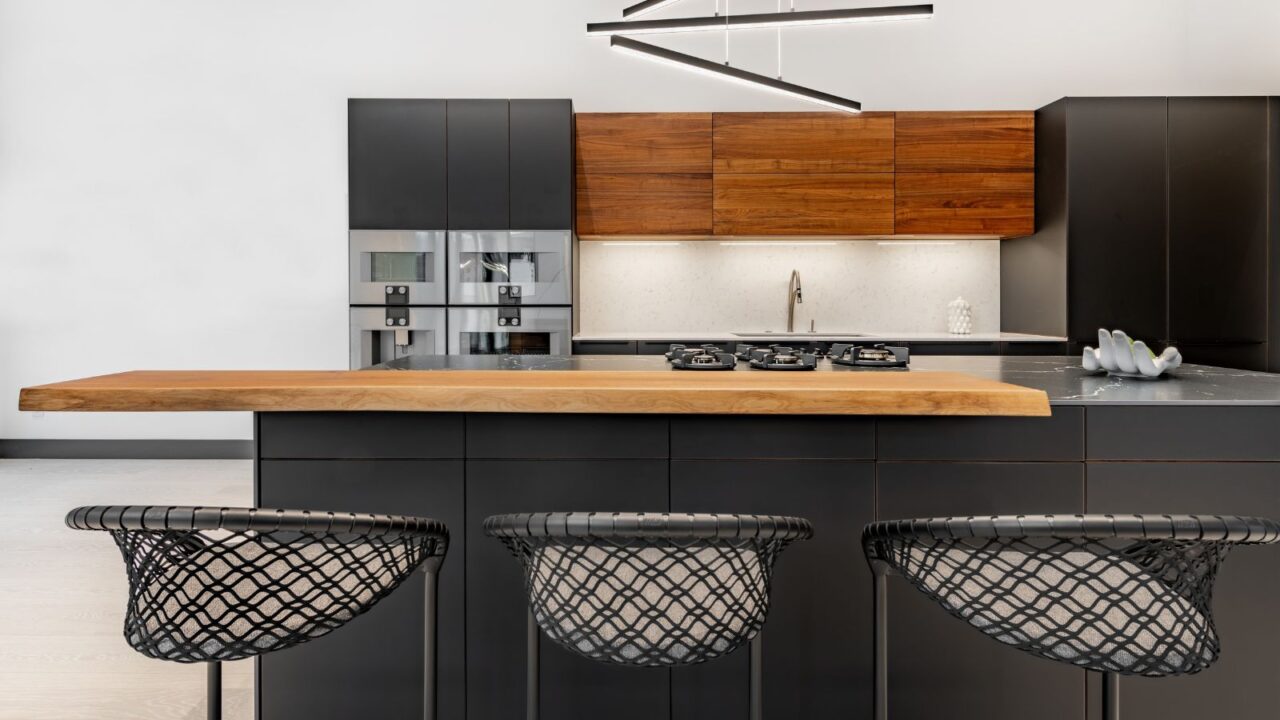
Black
Black kitchens made a striking statement in the early to mid-20th century, offering a sleek yet nostalgic appeal. This bold, dramatic shade pairs beautifully with warm wood or metallic accents, creating a rich and timeless contrast.
Black works well on cabinets, countertops, or backsplashes, adding depth without overwhelming the space. Its classic elegance makes the kitchen feel refined, cozy, and effortlessly stylish while maintaining a vintage charm.
If you’re looking to make a design statement with your kitchen, give bold black kitchens a try.
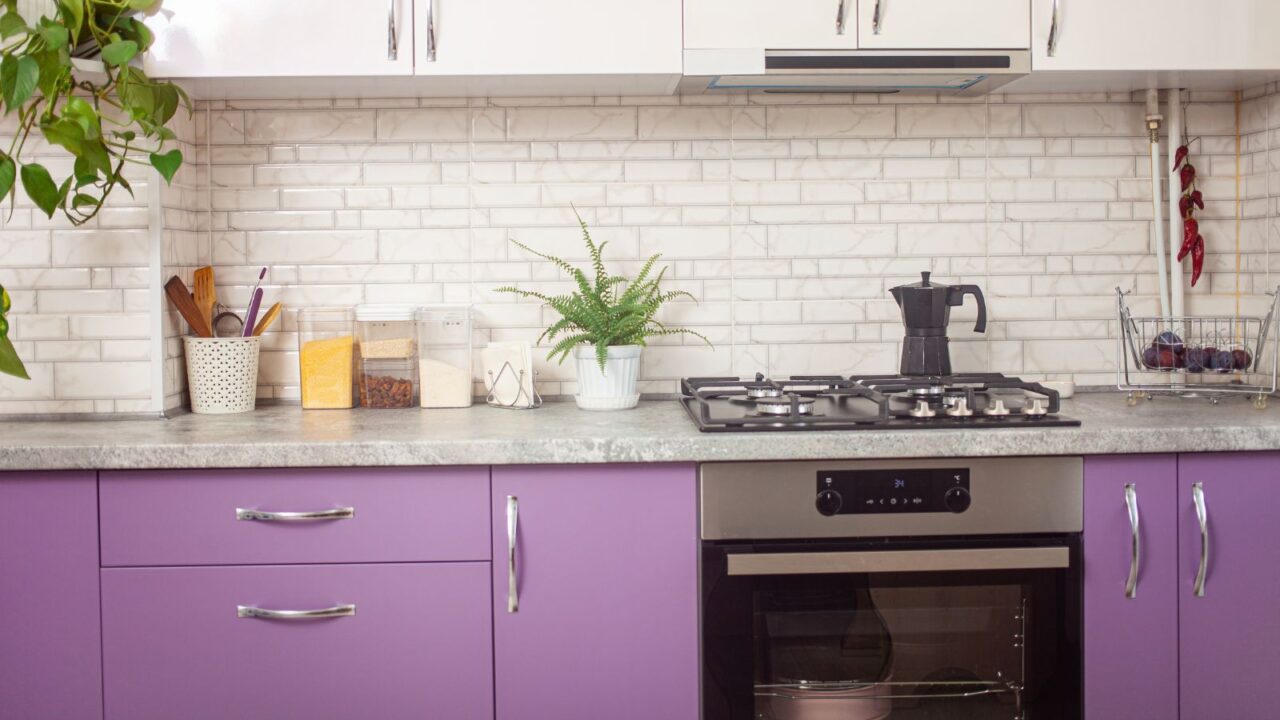
Lavender
Lavender kitchens were popular in the early 20th century, offering a gentle, romantic touch. This muted pastel shade creates a calming atmosphere and pairs well with white and soft gray shades. Using soft lavender on cabinets or walls adds a subtle vintage elegance without overpowering the space.
The color’s light, airy quality makes the kitchen feel refreshing and inviting while maintaining a timeless appeal. Pastel works great in other parts of the house, too. Check out my pastel bedroom makeover and you’ll know.
Which nostalgic kitchen color is your favorite? Let us know in the comments.
Read More From This Brand:
- Best Makeover Tips for Fresh and Airy Kitchen
- Kitchen Upgrades You Are Probably Overlooking Right Now
- Kitchen Gadgets That Changed My Cooking Game
Don’t forget to follow us for more exclusive content right here on MSN.